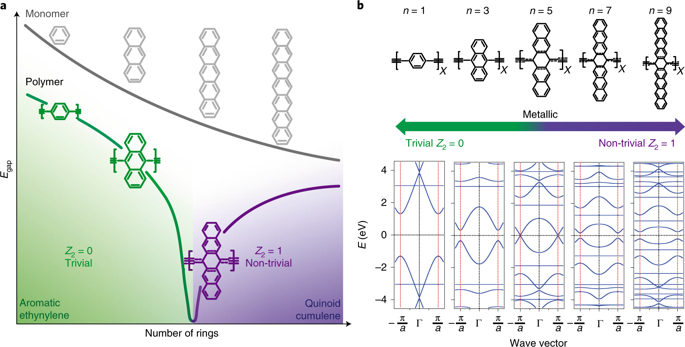当前位置:
X-MOL 学术
›
Nat. Nanotechnol.
›
论文详情
Our official English website, www.x-mol.net, welcomes your
feedback! (Note: you will need to create a separate account there.)
Tailoring topological order and π-conjugation to engineer quasi-metallic polymers.
Nature Nanotechnology ( IF 38.1 ) Pub Date : 2020-04-20 , DOI: 10.1038/s41565-020-0668-7 Borja Cirera 1 , Ana Sánchez-Grande 1 , Bruno de la Torre 2, 3 , José Santos 1, 4 , Shayan Edalatmanesh 2, 3 , Eider Rodríguez-Sánchez 1, 4 , Koen Lauwaet 1 , Benjamin Mallada 2, 3 , Radek Zbořil 3 , Rodolfo Miranda 1, 5 , Oliver Gröning 6 , Pavel Jelínek 2, 3 , Nazario Martín 1, 4 , David Ecija 1
Nature Nanotechnology ( IF 38.1 ) Pub Date : 2020-04-20 , DOI: 10.1038/s41565-020-0668-7 Borja Cirera 1 , Ana Sánchez-Grande 1 , Bruno de la Torre 2, 3 , José Santos 1, 4 , Shayan Edalatmanesh 2, 3 , Eider Rodríguez-Sánchez 1, 4 , Koen Lauwaet 1 , Benjamin Mallada 2, 3 , Radek Zbořil 3 , Rodolfo Miranda 1, 5 , Oliver Gröning 6 , Pavel Jelínek 2, 3 , Nazario Martín 1, 4 , David Ecija 1
Affiliation

|
Topological band theory predicts that a topological electronic phase transition between two insulators must proceed via closure of the electronic gap. Here, we use this transition to circumvent the instability of metallic phases in π-conjugated one-dimensional (1D) polymers. By means of density functional theory, tight-binding and GW calculations, we predict polymers near the topological transition from a trivial to a non-trivial quantum phase. We then use on-surface synthesis with custom-designed precursors to make polymers consisting of 1D linearly bridged acene moieties, which feature narrow bandgaps and in-gap zero-energy edge states when in the topologically non-trivial phase close to the topological transition point. We also reveal the fundamental connection between topological classes and resonant forms of 1D π-conjugated polymers.
中文翻译:

量身定制拓扑顺序和π共轭以设计准金属聚合物。
拓扑带理论预测,两个绝缘子之间的拓扑电子相变必须通过闭合电子间隙来进行。在这里,我们使用这种转变来规避π共轭一维(1D)聚合物中金属相的不稳定性。借助密度泛函理论,紧密结合和GW计算,我们预测了从平凡的量子相到非平凡的量子相的拓扑过渡附近的聚合物。然后,我们使用具有定制设计的前体的表面合成技术来制造由一维线性桥接并苯结构部分组成的聚合物,这些结构在狭窄的非平凡相中接近于拓扑转变点时具有窄的带隙和间隙中的零能边缘态。 。我们还揭示了拓扑类别与一维π共轭聚合物的共振形式之间的基本联系。
更新日期:2020-04-24
中文翻译:

量身定制拓扑顺序和π共轭以设计准金属聚合物。
拓扑带理论预测,两个绝缘子之间的拓扑电子相变必须通过闭合电子间隙来进行。在这里,我们使用这种转变来规避π共轭一维(1D)聚合物中金属相的不稳定性。借助密度泛函理论,紧密结合和GW计算,我们预测了从平凡的量子相到非平凡的量子相的拓扑过渡附近的聚合物。然后,我们使用具有定制设计的前体的表面合成技术来制造由一维线性桥接并苯结构部分组成的聚合物,这些结构在狭窄的非平凡相中接近于拓扑转变点时具有窄的带隙和间隙中的零能边缘态。 。我们还揭示了拓扑类别与一维π共轭聚合物的共振形式之间的基本联系。











































 京公网安备 11010802027423号
京公网安备 11010802027423号